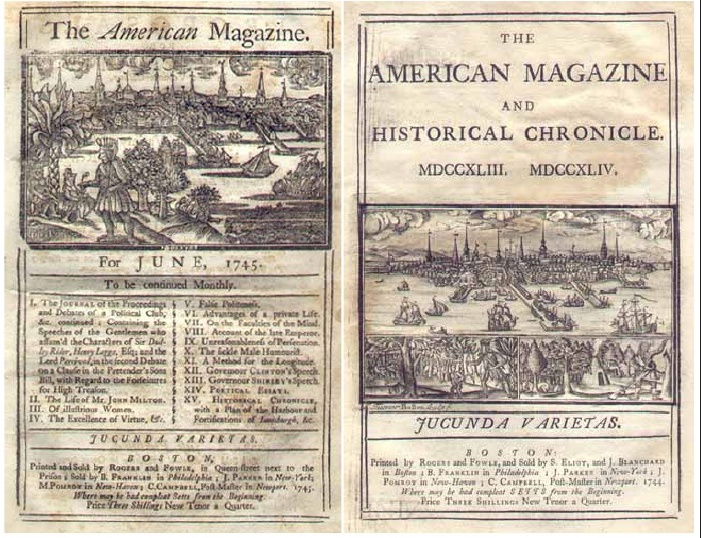You see them everywhere. Gas stations, newsstands, book stores, your doctor’s office, your bathroom. Magazines are an essential part of our everyday life – whether we notice them or not!
Magazines serve to provide us with information on entertainment, news, fashion, politics, and so much more. They provide us with insight into the current trends and issues going on in our world. 73% of adults say that reading a magazine in print format is more enjoyable than reading on a device (sgnetwork.com). Despite the advancement of digital technology, adults over the age of 25 prefer to find information on paper.
There is over 7,400+ print magazines in the United States, which is up from 7,350 in the previous years. The fastest growing magazine genre, according to Statista, is “Special Interest.”
Did you know? In America, the first magazines ever published date back to 1741! Andrew Bradford, a printer in Philadelphia, and Benjamin Franklin, who owned rival newspapers, competed to establish the first American magazine. Bradford won the award for being the first to publish, according to Magazines.com.

Are you considering printing magazines? Here are the top five things you should be aware of:
Binding style: The magazines you see on a day-to-day basis are typically perfect bound. However, saddle-stitch is another form of binding that can be used for magazines with fewer pages because of its economic value. There are also other forms of binding that are not as common, these include: comb, spiral, wire O, and coil.
Dimensions: The standard size for printing magazines is 8.5 by 11 and 5.5 by 8.5 inches. You can also find the digest size which runs 5.5 by 8.25 inches. Most common sizes for printing magazines are DIN A4 and DIN A5. If you’re looking for a unique size, it might be best to use the contact form below so our team can help get you started.
Ink colors: Magazines typically maintain a lot of images, so they are most commonly full-colored pages. Full-color signifies (CMYK) Cyan, Magenta, Yellow and Black which are the colors used in the vast majority of commercial magazine printing. Make sure that when designing your magazine, you are designing for print.
Paper Stock: Magazines typically utilize relatively thin stock paper, which helps to reduce bulk and save money. For the inside pages, magazines normally utilize 80 to 90 GSM paper, with a stronger cover stock for the cover.
Paper Coatings: Gloss coating gives magazine pages a high level of reflection and allows the ink to lift, resulting in stunningly rich color tones.
Still have lots of questions? We’re here to answer them.
We interviewed Michele Santos, magazine printing professional and Solo’s very own Senior Account Executive.

Introduce yourself! How long have you been in the printing industry?
I’m Michele, a Senior Account Executive at Solo Printing and magazine printing extraordinaire! I’ve been in the printing industry for 22 years, and throughout both decades I have worked consistently with incredible magazine publishers looking to publish every type of high volume magazines possible.
What are the top things to know about magazine printing?
Michele: Make sure you understand the publisher’s business model and their scheduling expectations. Knowledge is power and the more you learn about what they do the easier it will be to suggest things that will make them stand out, while still remaining cost effective and efficient.
What paper do you recommend for specific magazine types? Glossy? Matte? Etc.
Michele: I always recommend asking for a commercial printer’s “house” stocks. The paper finish is their preference; however, it’s been my experience that if you recommend papers that are readily available and are able save customers money, they typically go with that – especially in today’s chaotic market.
What should you consider before designing or printing a magazine?
Michele: There are several things to consider. My Top 3 would be 1) Establish your budget, 2) Know your demographic, 3) Partner with a solid printing company like Solo.
What’s the most cost-effective strategy?
Michele: The #1 way to save money is to design the magazine based on the printer’s manufacturing platform. Also, choose paper stocks that are always in inventory. Circulation is also something to consider as well. Printing enough magazines is critical. For example. It is substantially more cost-effective to print 15,000 magazines at once, than it is to print 10,000 first and reprint 5,000 later.
What coating looks best on magazines?
Michele: All of them look great, but my personal favorite is Soft Touch Aqueous. It’s feels like “buttah” and looks very upscale.
What’s the best way to bind a magazine?
Michele: My preference is perfect binding, but the page count usually determines if a magazine will saddle stitch or perfect bind. If it is a candidate for both then it’s really up to the client.
What do you recommend someone who is trying to self-publish their magazine and thinking of printing?
Michele: I always recommend they start conservatively and then build on their success. Also, Direct Mail is the number one way to reach your targets. Typically my recommendations will depend on what their budget and goals are.


